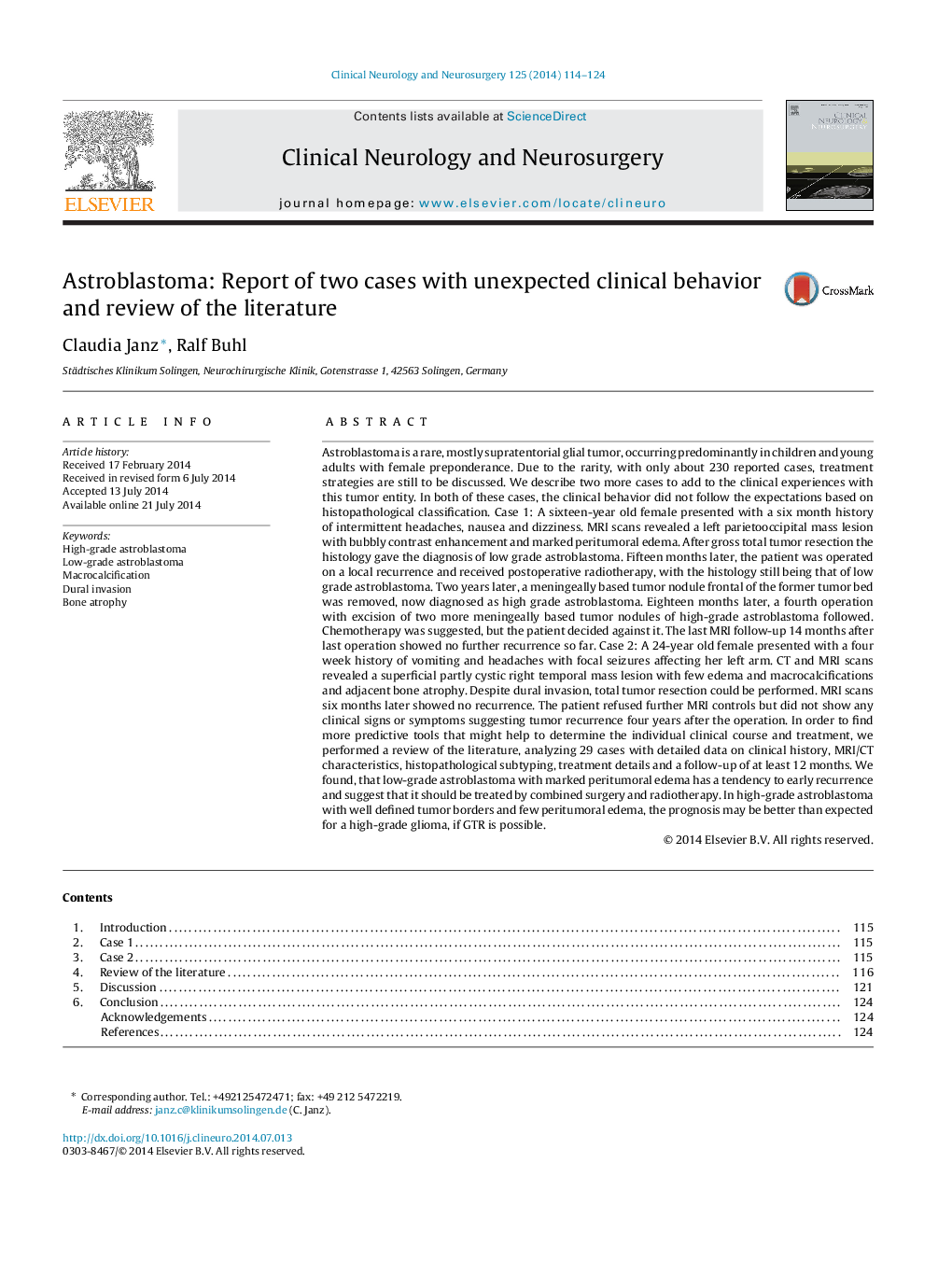| Article ID | Journal | Published Year | Pages | File Type |
|---|---|---|---|---|
| 3040198 | Clinical Neurology and Neurosurgery | 2014 | 11 Pages |
•In astroblastoma, other factors than histological classification might determine clinical behavior.•Low-grade astroblastoma with marked peritumoral edema has a tendency to have early recurrence and should be treated by tumor resection and radiotherapy.•In high-grade astroblastoma with well-defined borders and few peritumoral edema, prognosis may be better than expected for a high-grade glioma, if GTR is possible.•Macrocalcification and bone atrophy are possible radiological features in astroblastoma.
Astroblastoma is a rare, mostly supratentorial glial tumor, occurring predominantly in children and young adults with female preponderance. Due to the rarity, with only about 230 reported cases, treatment strategies are still to be discussed. We describe two more cases to add to the clinical experiences with this tumor entity. In both of these cases, the clinical behavior did not follow the expectations based on histopathological classification. Case 1: A sixteen-year old female presented with a six month history of intermittent headaches, nausea and dizziness. MRI scans revealed a left parietooccipital mass lesion with bubbly contrast enhancement and marked peritumoral edema. After gross total tumor resection the histology gave the diagnosis of low grade astroblastoma. Fifteen months later, the patient was operated on a local recurrence and received postoperative radiotherapy, with the histology still being that of low grade astroblastoma. Two years later, a meningeally based tumor nodule frontal of the former tumor bed was removed, now diagnosed as high grade astroblastoma. Eighteen months later, a fourth operation with excision of two more meningeally based tumor nodules of high-grade astroblastoma followed. Chemotherapy was suggested, but the patient decided against it. The last MRI follow-up 14 months after last operation showed no further recurrence so far. Case 2: A 24-year old female presented with a four week history of vomiting and headaches with focal seizures affecting her left arm. CT and MRI scans revealed a superficial partly cystic right temporal mass lesion with few edema and macrocalcifications and adjacent bone atrophy. Despite dural invasion, total tumor resection could be performed. MRI scans six months later showed no recurrence. The patient refused further MRI controls but did not show any clinical signs or symptoms suggesting tumor recurrence four years after the operation. In order to find more predictive tools that might help to determine the individual clinical course and treatment, we performed a review of the literature, analyzing 29 cases with detailed data on clinical history, MRI/CT characteristics, histopathological subtyping, treatment details and a follow-up of at least 12 months. We found, that low-grade astroblastoma with marked peritumoral edema has a tendency to early recurrence and suggest that it should be treated by combined surgery and radiotherapy. In high-grade astroblastoma with well defined tumor borders and few peritumoral edema, the prognosis may be better than expected for a high-grade glioma, if GTR is possible.
